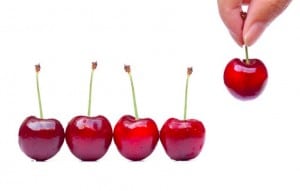
A Story Spine
The best storytelling templates arise from the arts. Improv artist Kenn Adams laid out what he called a “story spine” as a mechanism to help children and adults play with improvisational theatre. According to Kenn, the origin of his template arose from his desire to bring arts, creativity, and improv play to more people. The template is a guide for creating characters and a plot that produces a spontaneous play that is as satisfying to the players as the audience.
Pixar Studios uses a similar template to provide structure to illustrate core human conflicts with a story.
Once upon a time there was ___. Every day, ___.
One day ___.
Because of that, ___.
Because of that, ___.
Until finally ___.
(And ever since that day______.)
A beginner storyteller given this template might find fill in the blanks with merely plausible events and characters instead of looking to personal experiences with real people, actual life events, and the sensations of time and space. No template can correct for a storyteller who doesn’t remember to “write what you know.” It’s worth noting that this template is only one part of Pixar’s 22 rules of storytelling. Without the other twenty-one rules the template could be limited to creating merely feasible characters negotiating hypothetical situations. Apply the other twenty-one rules, such as “remember that what is most fun to write doesn’t necessarily translate into what is most interesting to an audience,” and the template becomes much more useful.
Story as Cause/Effect
The novelist E.M. Forster famously stated that “the king died then the queen died” was not a plot until adding the detail that the queen died “of grief”. Some have interpreted this to mean that stories set up clear cause/effect relationships. It’s not a bad way to hunt for a plot – love sets you free, pride leads to a fall, etc. – but this method risks oversimplifying relational truths, and correlations. Love usually kicks your butt before it sets you free and pride leads to wins as well as losses. Whenever a storyteller forces a story to suggest an easy cause/effect relationship he runs the risk of omitting complexities that render the story as recognizably realistic. Perhaps the king killed the queen’s lover before he died. Her grief gets a bit more complex and the reader is offered more freedom to come to his or her own conclusions.
There are risks to restricting a story to the format of cause and effect. We create unnecessary problems when we tell a story that suggests a clear single cause and direct effect, when the truth is far more complex. Cause/effect stories can discredit story-supported social norms, like the golden rule. For instance, if a story translates “do unto others as you would have them do unto you” into a cause/effect relationship, it unilaterally suggests treating people fairly automatically causes others to treat you fairly in return. Forcing a story to characterize any human dilemma as an effect of a single cause unwittingly encourages oversimplified solutions that don’t work in real life. Even when simple parables imply cause/effect sequences, the goal is to reinforce reliably accurate correlations—not statistically provable causes and effects. Within storytelling, then, be advised that impressions of cause/effect are usually metaphorical and correlational.
Excerpt from Chapter 11, 3rd ed. of The Story Factor (2019) AUDIBLE VERSION HERE


3 thoughts on “Storytelling Moral Survival System: Part nine (templates)”
Annette
I have been diligent in comparing your thoughts with my experience and found that I was in agreement with so much of what you were writing that I was beginning to wonder if you’d been spying on me. But at last, finally, a point of divergence for me.
I think ALL stories are about one or more cause and effect relationships. Why else bother to tell them but to relate something about your experience (or an abstraction of your experience) to another in the hope of making a better connection with another. Or, at least to understand why the connection doesn’t exist?
Now you make the point that over-simplification of a cause and effect relationship can mask the myriad complexities (like unintended consequences and complex ambiguities) that exist between and among people. I whole-heartedly agree with that. But, those are also causes and effects.
As one who comes from a point of reference from the sciences side of the liberal arts and sciences concept, I think I hear you restating an Einsteinian concept relating to complexity. When exploring how the universe works, he reportedly said, “everything should be made as simple as possible, but no simpler.”
I think your point is that failure to account for the breadth and depth of a cause and effect relationship is akin to making something beyond as simple as possible and into to the realm of too simple. So perhaps we are actually in violent agreement. LOL.
Steven, yet again we arrive at the same place from different perspectives! I’m writing primarily to caution people from taking correlations like Beautiful Girl uses XX product into XX product causes Beautiful Girl. Or worse, Coronovirus occurs in China into China caused Coronovirus. When storytelling teachers propose that story is cause/effect they mislead their students to think that’s the goal. When I wonder “why” something happened, I use the discipline of finding at least six causes – just to keep me from mindlessly pushing my agenda.
Annetter –
You mean correlation isn’t causation? Horrors! How will people be able to bludgeon others into submission without it? What will Fox News and CNN have to say without it?
Like the constable in Casablanca, “I’m shocked! Round up the ususal suspects.”
Although I find much of Ayn Rand’s work pedantic, in one case her protagonist says, “DesCartes got it backward. It’s not I think, therefore, I am. It’s I am, therefore, I think.” That sentiment resonates with me. “Don’t make me think.” is a recipe for failure in technical work and in relationships. It shouldn’t surprise me that it doesn’t work well in storytelling either.
Keep on keepin’ on.
Steve